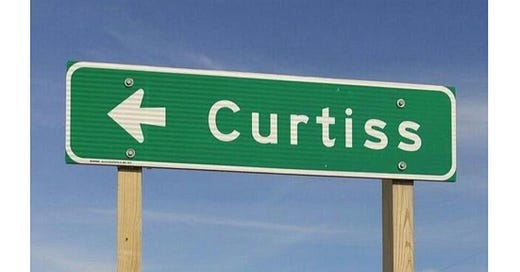Dumped by the Roadside
It wasn’t always this way and it won’t stay like this forever. I am sure of that, despite coming from a place that looks pretty much as it did a hundred years ago and more or less as it will a hundred years from now. Outward appearances deceive.
Over the course of 40-plus years, I have stood before thousands of audiences small and large, mostly small. Each time, I spoke my piece, doing my best to raise my nasally voice for social and economic justice, then took comments and questions. In more recent years, I heard one comment more than any other from audiences that were aware of my rural roots.
They vote the way they do because they’re bigots.
I understand where the comment comes from. Of Wisconsin’s rural residents who bothered to vote in the last three presidential elections, commanding majorities of them cast their ballots for a man who is unquestionably a white supremacist and has shown himself to be not only a male chauvinist but also a sexual predator.
Still, every time it came up, I answered the comment with two questions. If it’s true that bigotry is their guide on Election Day, how do you explain dozens of Wisconsin’s most rural counties voting to elect the nation’s first black president?
If it’s true they’re voting out of bigotry’s spite, how do you explain many of our most rural counties helping elect an out lesbian to the United States Senate, choosing her over the only four-term governor the state has ever known?
Making sense of the rural vote in the last three presidential elections in light of these two other fairly recent election outcomes is no easy task. At present, on the surface, small towns and farm country appear deeply conservative, Republican to the extreme. Buried below are complicated realities. And illuminating history.
In the early 1930s, the country had plunged into economic depression. Commodity markets had collapsed. Plummeting milk prices filled dairy farmers with desperation. Charles Goldamer, a farmer from Abbotsford, just down the road from where I grew up, stood before 500 angry farmers in Clark County, today a Republican stronghold, declaring “we are going to strike until doomsday unless our rights are recognized and we receive cost of production plus a profit.”
The brewing revolt led more than 5,000 farmers to gather in nearby Marshfield to organize to withhold their milk. By early 1933, some 130,000 Wisconsin farmers—nearly three-quarters of the state’s farmers at that time—had joined the strike. They dumped milk, shut down cheese and butter plants, dynamited some of them, barricaded roads to block products from reaching Milwaukee and Madison.
Wisconsin’s governor resorted to Red Scare tactics, branding the striking farmers socialists who’d fallen under the spell of Bolsheviks, and deployed the National Guard. Strikers were met with tear gas, attacked with bayonets and clubs, one farmer was shot in the neck and died in his brother’s arms. An October 29, 1933 editorial in the Wisconsin State Journal compared the killing to the start of the American Revolution. The revolt spread outside Wisconsin. Finally, President Franklin Roosevelt responded to calls from five Midwestern governors to take action on milk pricing.
Results weren’t immediate, but eventually commodity pricing guarantees were put in place that produced market stability and adequate prices for farmers. The New Deal supply management program proved effective for well over 50 years until federal legislation in 1996 started unraveling it. Still, remnants of the system prompted by the milk strike of 1933 remain in operation today.
In case you’re tempted to conclude what happened 92 years ago was a one-off, think again. In the fall of 1974, when I was 14 years old, living on my family’s Clark County dairy farm a few miles outside of the little town of Curtiss, frustrated farmers again took desperate measures to protest their plight. Feed costs had soared and cattle and hog prices had fallen to the point where the cost of shipping animals to market was more than the sale price farmers were getting for them.
A huge trench was dug not far from the county road that runs through town and by nightfall on October 15 more than 650 calves and 15 pigs had been slaughtered, their carcasses dumped in the trench. Walter Cronkite reported the grim happenings in Curtiss on the CBS evening news. The next day, The New York Times chronicled the incident this way:
“About 300 farmers, newsmen and onlookers were at the site in central Wisconsin’s dairy region. Each farmer who drove up with animals helped to kill his own. Most of the calves, ranging in age from two days to two weeks, were killed by revolver shots in the head. The throats of others were slit and they were pushed into the trench.”
My family chose not to participate. Curtiss had a population of about 150 back then, all white. Today, slightly more than 200 people call the community home, the majority of whom are racial minorities, making it a bigger stretch than ever to say they’re voting the way they are because they’re bigots.






